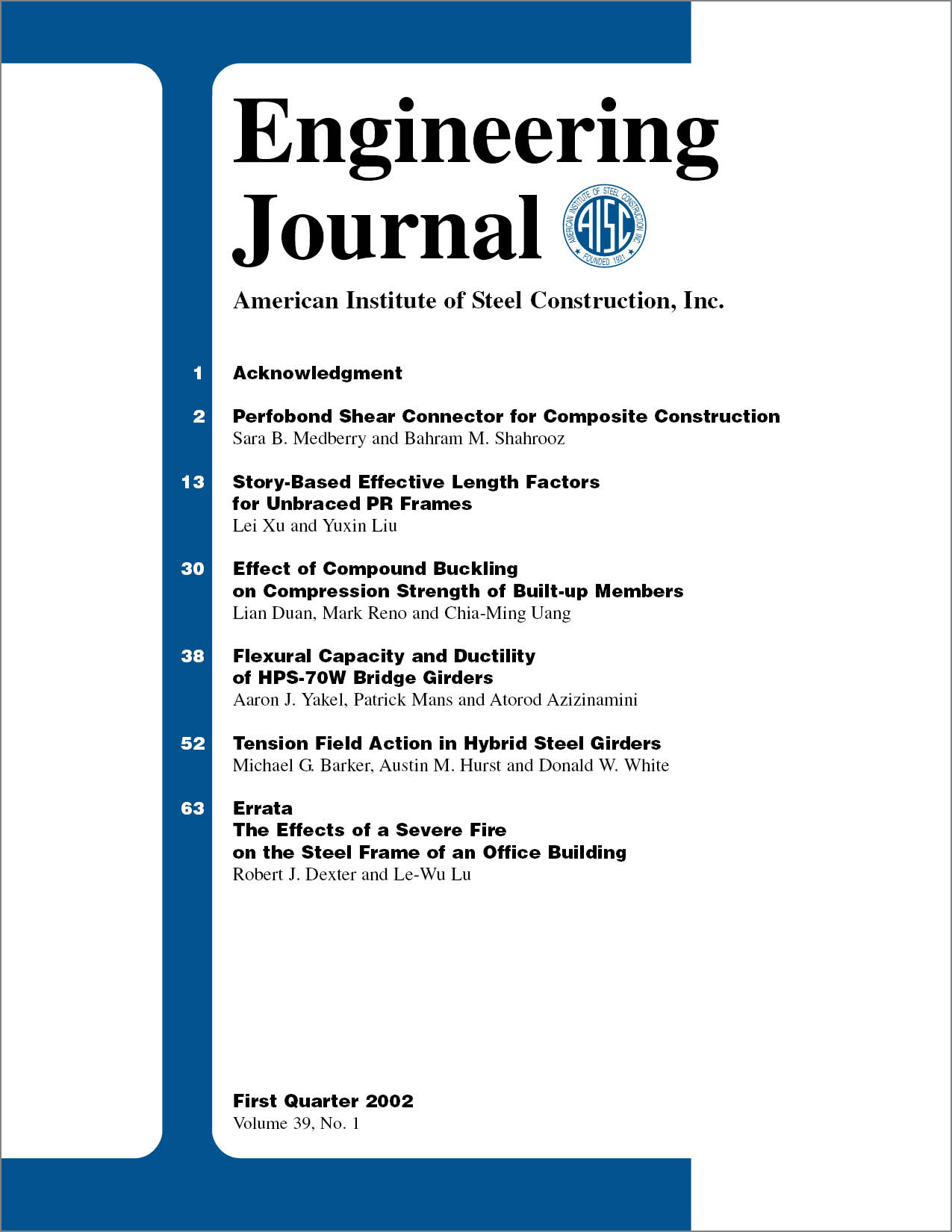Effect of Compound Buckling on Compression Strength of Built-up Members
DOI:
https://doi.org/10.62913/engj.v39i1.769Abstract
Design engineers frequently use built-up members for steel building and bridge construction for economical reasons. The first issue is the shearing effect. For laced or battened members, the shear deformation produced by laces or battens would reduce the buckling capacity. Two types of built-up members are commonly used for steel construction. Laced or battened members with widely spaced flange components fall in the first type, and closely spaced steel shapes interconnected at intervals by welds or connectors form the second type. The compressive strength of both types of members is affected by the shearing effect. For the first type, the shearing effect results from the deformation of flanges and laces, while for the second type the effect is caused by the shearing of intermediate connectors. The LRFD Specification (AISC, 1999) considers the shearing effect of the second type, but not the first type.

